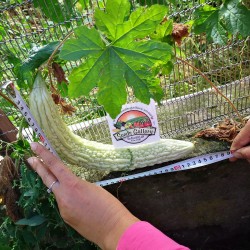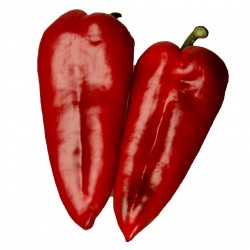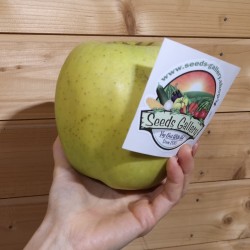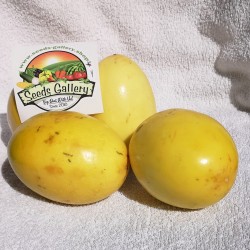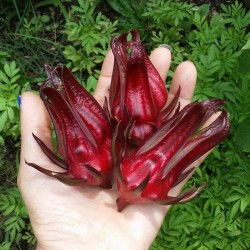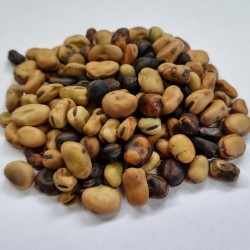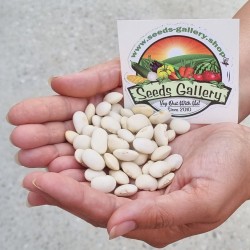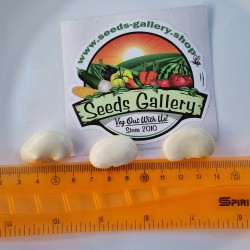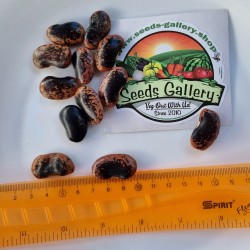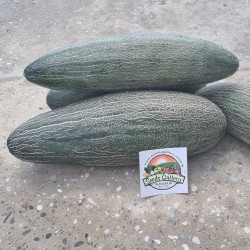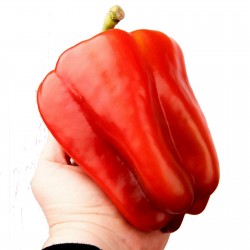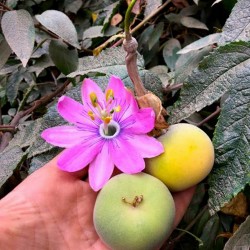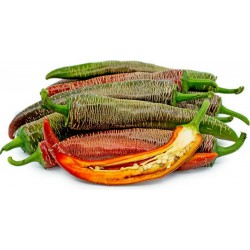
Óriás növény (óriás gyümölcsökkel)

A növény ellenáll a hidegnek és a fagynak
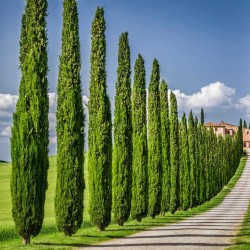
Mediterranean cypress Seeds...
Ár
1,75 €
(SKU: T 16 CS)
Seeds Gallery EU,
5/
5
<h2><strong>Mediterranean cypress Seeds (Cupressus sempervirens)</strong></h2>
<h2><span style="color: #ff0000; font-size: 14pt;"><strong>Price for Package of 0.5 g (about 50 seeds).</strong></span></h2>
<p><i><b>Cupressus sempervirens</b></i>, the<span> </span><b>Mediterranean cypress</b><span> </span>(also known as<span> </span><b>Italian cypress</b>,<sup id="cite_ref-BSBI07_1-0" class="reference"></sup><span> </span><b>Tuscan cypress</b>,<span> </span><b>Persian cypress</b>, or<span> </span><b>pencil pine</b>), is a<span> </span>species<span> </span>of<span> </span>cypress<span> </span>native<span> </span>to the eastern<span> </span>Mediterranean region, in northeast<span> </span>Libya, southern<span> </span>Albania, southern and coastal<span> </span>Bulgaria, southern coastal<span> </span>Croatia, southern<span> </span>Montenegro, southern<span> </span>Bosnia and Herzegovina, southern<span> </span>Greece, southern<span> </span>Turkey,<span> </span>Cyprus,<span> </span>northern Egypt, western<span> </span>Syria,<span> </span>Lebanon,<span> </span>Malta,<span> </span>Italy,<span> </span>Palestine,<span> </span>Israel, western<span> </span>Jordan, South<span> </span>Caucasus, and also a<span> </span>disjunct population<span> </span>in<span> </span>Iran.</p>
<p><i>Cupressus sempervirens</i><span> </span>is a medium-sized<span> </span>coniferous<span> </span>evergreen<span> </span>tree<span> </span>to 35 m (115 ft) tall, with a conic crown with level branches and variably loosely hanging branchlets.<sup id="cite_ref-2" class="reference">[2]</sup><span> </span>It is very long-lived, with some trees reported to be over 1,000 years old.</p>
<p>The foliage grows in dense sprays, dark green in colour. The leaves are scale-like, 2–5 mm long, and produced on rounded (not flattened) shoots. The seed<span> </span>cones<span> </span>are ovoid or oblong, 25–40 mm long, with 10-14 scales, green at first, maturing brown about 20–24 months after pollination. The male cones are 3–5 mm long, and release pollen in late winter. It is moderately susceptible to<span> </span>cypress canker, caused by the fungus<span> </span><i>Seiridium<span> </span>cardinale</i>, and can suffer extensive<span> </span>dieback<span> </span>where this disease is common. The species name<span> </span><i>sempervirens</i><span> </span>comes from the Latin for 'evergreen'.</p>
<h2><span class="mw-headline" id="Uses">Uses</span></h2>
<p>Mediterranean cypress has been widely cultivated as an ornamental tree for millennia away from its native range, mainly throughout the whole Mediterranean region, and in other areas with similar hot, dry summers and mild, rainy winters, including California, southwest South Africa and southern Australia. It can also be grown successfully in areas with cooler, moister summers, such as the British Isles, New Zealand and the Pacific Northwest (coastal Oregon, Washington and British Columbia). It is also planted in Florida and parts of the coastal southern United States as an<span> </span>ornamental tree. In some areas, particularly the United States, it is known as "Italian" or "Tuscan cypress".</p>
<p>The vast majority of the trees in cultivation are selected<span> </span>cultivars<span> </span>with a<span> </span>fastigiate<span> </span>crown, with erect branches forming a narrow to very narrow crown often less than a tenth as wide as the tree is tall. The dark green "exclamation mark" shape of these trees is a highly characteristic signature of Mediterranean town and village landscapes. Formerly, the species was sometimes separated into two<span> </span>varieties, the wild<span> </span><i>C. sempervirens</i><span> </span>var.<span> </span><i>sempervirens</i><span> </span>(syn. var.<span> </span><i>horizontalis</i>), and the fastigiate<span> </span><i>C. s.</i><span> </span>var.<span> </span><i>pyramidalis</i><span> </span>(syn. var.<span> </span><i>fastigiata</i>, var.<span> </span><i>stricta</i>), but the latter is now only distinguished as a<span> </span>Cultivar Group, with no botanical significance.</p>
<p>It is also known for its very durable, scented<span> </span>wood, used most famously for the doors of<span> </span>St. Peter's Basilica<span> </span>in the<span> </span>Vatican City, Rome. Cypress used to be used in distilleries as<span> </span>staves<span> </span>to hold<span> </span>mash<span> </span>ferments to make alcohol before the invention of stainless steel. Commonly seen throughout<span> </span>New Mexico, the Mediterranean cypress is also known as the "drama tree" because of its tendency to bend with even the slightest of breezes.</p>
<p>In cosmetics it is used as<span> </span>astringent, firming,<span> </span>anti-seborrheic, anti-dandruff, anti-aging and as fragrance.<sup id="cite_ref-Carrasco_3-0" class="reference"></sup><span> </span>It is also the traditional wood used for Italian harpsichords.</p>
<h2><span class="mw-headline" id="Iran's_ancient_cypresses">Iran's ancient cypresses</span></h2>
<p>Cypress,<span> </span><i>Cupressus sempervirens</i>, was the first choice for Iranian Gardens. In all of the famous<span> </span>Persian Gardens, such as<span> </span>Fin Garden,<span> </span>Shazdeh Garden, Dowlat-Abad, and others, this tree plays a central role in their design.<sup class="noprint Inline-Template Template-Fact">[<i><span title="This claim needs references to reliable sources. (November 2011)">citation needed</span></i>]</sup><span> </span>The oldest living Cypress is the<span> </span>Sarv-e-Abarkooh<span> </span>in Iran's<span> </span>Yazd Province. Its age is estimated to be approximately 4,000 years.<sup id="cite_ref-5" class="reference"></sup></p>
<h2><span class="mw-headline" id="Symbolism">Symbolism</span></h2>
<p>In<span> </span>classical antiquity, the cypress was a symbol of mourning and in the modern era it remains the principal<span> </span>cemetery<span> </span>tree in both the Muslim world and Europe. In the classical tradition, the cypress was associated with death and<span> </span>the underworld<span> </span>because it failed to regenerate when cut back too severely.<span> </span>Athenian<span> </span>households in mourning were garlanded with boughs of cypress.<sup id="cite_ref-6" class="reference">[6]</sup><span> </span>Cypress was used to fumigate the air during<span> </span>cremations.<sup id="cite_ref-7" class="reference">[7]</sup><span> </span>It was among the plants that were suitable for making wreaths to adorn statues of<span> </span>Pluto, the<span> </span>classical<span> </span>ruler of the underworld.<sup id="cite_ref-8" class="reference"></sup></p>
<p>The poet<span> </span>Ovid, who wrote during the reign of<span> </span>Augustus, records the best-known myth that explains the association of the cypress with grief. The handsome boy<span> </span>Cyparissus, a favorite of<span> </span>Apollo, accidentally killed a beloved tame stag. His grief and remorse were so inconsolable that he asked to weep forever. He was transformed into<span> </span><i>cupressus sempervirens</i>, with the tree's sap as his tears.<sup id="cite_ref-9" class="reference">[9]</sup><span> </span>In another version of the story, it was the woodland god<span> </span>Silvanus<span> </span>who was the divine companion of Cyparissus and who accidentally killed the stag. When the boy was consumed by grief, Silvanus turned him into a tree, and thereafter carried a branch of cypress as a symbol of mourning.<sup id="cite_ref-10" class="reference"></sup></p>
<p>In Greek mythology, besides Cyparissus, the cypress is also associated with<span> </span>Artemis<span> </span>and<span> </span>Hecate, a goddess of magic, crossroads and the underworld. Ancient Roman funerary rites used it extensively.<sup class="noprint Inline-Template Template-Fact">[<i><span title="This claim needs references to reliable sources. (July 2019)">citation needed</span></i>]</sup></p>
<p>The most famous Muslim cemetery in Turkey where<span> </span><i>C. sempervirens</i><span> </span>is used widely is Istanbul<span> </span>Karacaahmet Cemetery. In<span> </span>Istanbul Turkish<span> </span>the tree is referred to as "Mezarlık Selvisi" (Cemetery Tree); its common name in Turkish and the name used in Turkish forestry is "Kara Selvi" (Black Cypress). Cypresses are mentioned extensively in the<span> </span><i>Shahnameh</i>, the great Iranian<span> </span>epic poem<span> </span>by<span> </span>Ferdowsi.<sup class="noprint Inline-Template Template-Fact">[<i><span title="This claim needs references to reliable sources. (July 2019)">citation needed</span></i>]</sup></p>
<p>In Jewish tradition, the cypress was held to be the wood used to build Noah's Ark and The Temple, and is mentioned as an idiom or metaphor in biblical passages, either referencing the tree's shape as an example of uprightness or its evergreen nature as an example of eternal beauty or health. It is popular in modern Israeli cemeteries, with contemporary explanation being that its shape resembles a candle and its being an evergreen symbolized the immortality of the soul.<sup class="noprint Inline-Template Template-Fact">[<i><span title="This claim needs references to reliable sources. (July 2019)">citation needed</span></i>]</sup></p>
<p>In popular culture the Italian cypress is often stereotypically associated with vacation destinations to the Mediterranean region; Italy in particular. The tree has been seen on travel posters for decades.</p>
<h2><span class="mw-headline" id="Other_characteristics">Other characteristics</span></h2>
<p>In July 2012, a forest fire, lasting five days, devastated 20,000 hectares of forest in the Valencian village of<span> </span>Andilla. However, amid the charred landscape, a group of 946 cypress trees about 22 years old was virtually unharmed, and only 12 cypresses were burned. Andilla cypresses were planted by the CypFire European project studying various aspects of the cypresses, including fire resistance.</p><script src="//cdn.public.n1ed.com/G3OMDFLT/widgets.js"></script>
T 16 CS (0,5g)





